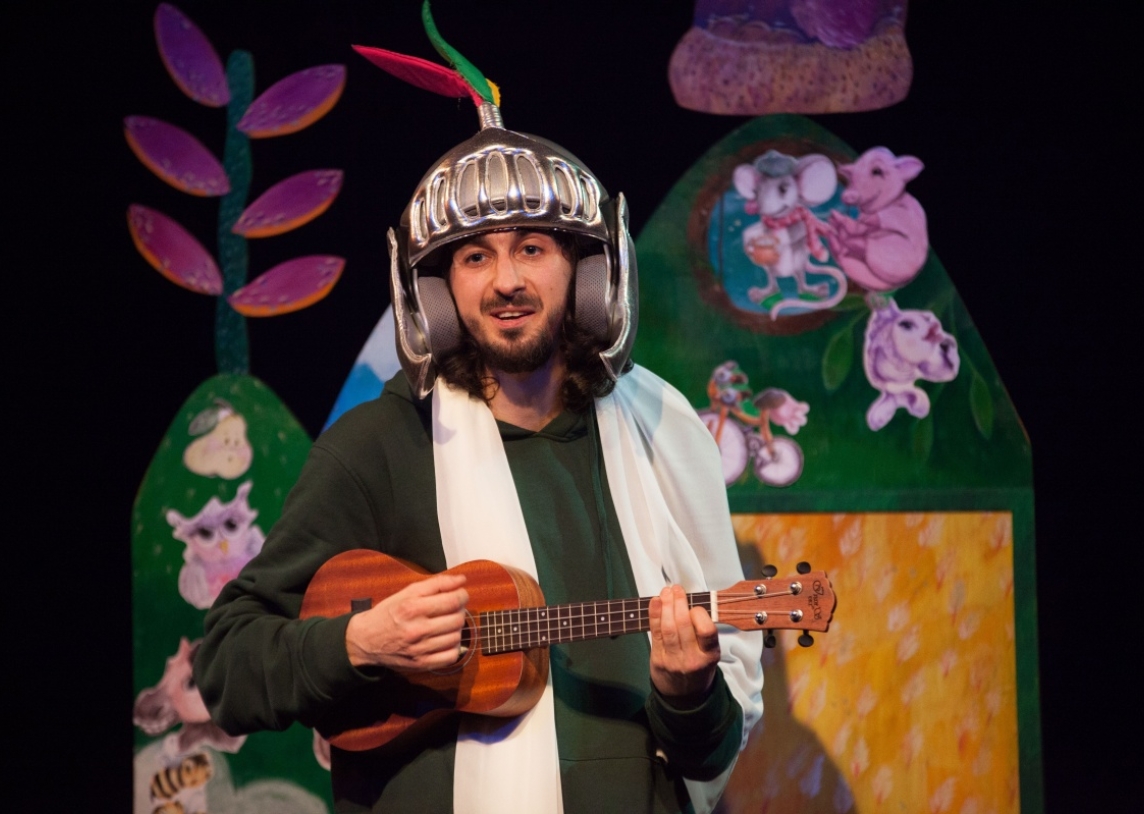- International Platform
- Content
Content
Split City Puppet Theater, “How Do Children Grow Up”: What Is a Play without an Audience?
Author: Ivona Čačulović
Although the play “How Do Children Grow Up” is not in itself overly challenging, the children in the audience enhanced its charm and entertainment layer, which opened the question of the influence of the audience on the play.
The play How Do Children Grow Up of the Split City Puppet Theater, which arrived at the 54th PIF as a replacement for the announced Thumbelina, raised an important question in me: how much can the audience influence the overall impression and course of the play?
The audience, along with the performers, is a key element of a live theater performance, whose basic characteristic is the duration in a certain space and time. True, a similar work of art could be created the following evening, but different audiences and differences in the performers themselves will make it different, special. If we compare this aspect of the performing arts with, for example, the fine arts, we will notice significant differences. Although different audiences can come to the Louvre to watch the Mona Lisa day after day, year after year, and everyone will watch and evaluate it in their own way, it will not affect the image itself and its durability over time.
Unlike the fine arts, a live audience has double importance in terms of the performing arts - existential and performative. In existential terms, if the live audience disappears, as the situation with Covid has shown, so will the performing arts as we know them. In terms of performance, there is a constant cyclical exchange of reactions between the audience and the performer during the performance. In this context, the actors talk about “feeding” the energy of the audience, especially in comedy, and complain about the audience that does not react appropriately. Consequently, audience feedback will greatly affect the quality of the acting performance. If we draw a parallel with film art, viewers’ reactions to a film they have watched multiple times will change, depending on the context in which they watch it. However, in this case the change is one-sided.
The size of the audience will also influence the reactions. A larger audience is more likely to laugh or comment loudly than a small audience, partly because of a sense of security in their own anonymity, and partly because the reactions of others encourage and reinforce their own reactions. As part of the “crowd”, the viewer can laugh more loudly, cry, jump in the seat or shout. But at the same time, if the tastes of the individual and the rest of the audience differ, the positive reaction of the group can amplify the negative reaction of the individual.
The play How Do Children Grow Up prompted me to think about this very notion of the audience's influence on the quality of the play. Namely, the play itself seemed uninventive to me, and in some respects exaggerated. I will take the actor’s gestures and facial expressions as an example. Franjo Đaković, led by director Bojan Brajčić and playwright Belmando Miliša, acted the whole play with overemphasized body movements and gestures that turned into grimaces, sounds and similar. The result was more of a “slapstick” comedy than a sympathetic and instructive story derived from the verses of the well-known Grigor Vitez. However, I have the impression that it was a bad decision, which was confirmed by the audience. Namely, the children reacted poorly and indifferently to the moments when the comedy was underlined, while they reacted much better to the story itself and the parts where it was not so much exaggerated in songs, mimics and movements.
Although the play is not designed to be interactive and does not require the participation of the audience, the children got involved on their own and thus made it more fun and interesting. A wonderful symbiosis was created between the actor and the audience in which the actor told the story of rural animals, and the children began to imitate their sounds or joined him in reciting famous verses. The interaction itself was very interesting and surely the rest of the audience wanted to know what the ingenious children would do next.
I have to praise the scene and the costume by Tina Vuksanović which were simple, but eye-catching. The simple panel with the help of which the performer designed the story greatly embellished the show, and the costume kept the audience's attention all the time due to the change of small details. The addition of a “smart” helmet, colorful socks and a sword that will defeat the terrible dragon made our main character even sillier. The music was also ingenious, cheerful and appropriate. Both children and adults liked it, and some children sang along with the actor even though they didn’t know the words.
In conclusion, although the play itself is not overly challenging, the children's participation enhanced the charm and entertainment of this play.

